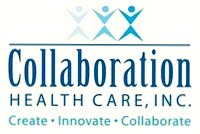
We were pleased to take part in an event the other day hosted by Northwestern Health Sciences University and co-sponsored by the University of Minnesota's Center for Spirituality and Healing, School of Nursing, and LifeScience Alley. The theme; Integrative Health: Implications for Patients and Purchasers was designed to be a "local conversation about healthcare reform".
The event was well represented by many of the key health care stakeholders throughout the Twin Cities area and was indicative of the interest the market (or at least some key stakeholders) is beginning to show for integrative health care approaches and the role it can and should play in the new system that is evolving. The attendance was also indicative of the need for more of these types of discussions to share ideas, collaborate, and simply provide a venue to let everyone know what is going on in a changing world.
Mary Jo Kreitzer, PhD, RN (Director, Center of Spirituality and Healing) summarized the evolution of integrative health care from the beginning to where it is today. She pointed out that integrative health care has moved from "alternative" to a position to where it can and should play a much more integral role in health care delivery.
Charles Sawyer, DC (Sr. VP, Northwestern Health Sciences University) reviewed the escalating health care cost statistics we are all so familiar with today.
Patrick Geraghty (President and CEO of Blue Cross and Blue Shield of Minnesota) discussed the changing culture of his health plan from being a "health insurer" to a "health company" in response to the changing market expectations and demands.
Carolyn Pare (CEO of the Buyers Health Care Action Group) outlined the expectations of the employers in the new health care market and their interest in "value" not just new gimmicks or "stuff".
Frank Cerra, MD, (Dean of the Medical School at the University of Minnesota) discussed the changing roles of the providers, and emphasized that real health care reform needs to come from the providers and those delivering care.
When you reflect on the total context of these individual discussions it is very clear that the health care market is already changing. Relationships are changing and many of the delivery models that exist today won't be around a few years from now. Integrative health care with a "whole person focus" has a wonderful opportunity to play a much, much, larger role in health care delivery than it does today. We just need to develop the innovative approaches and the business models to make sure it happens.
The time is right.




